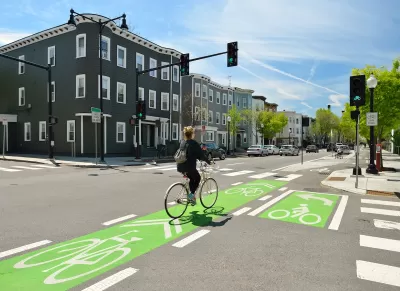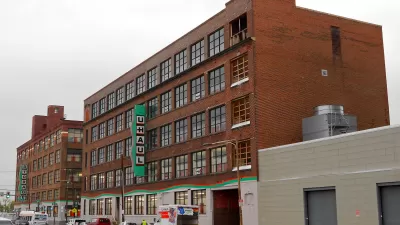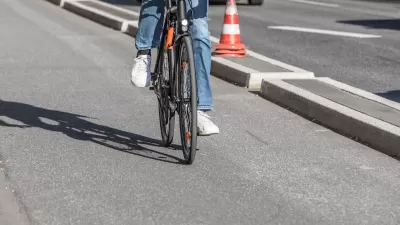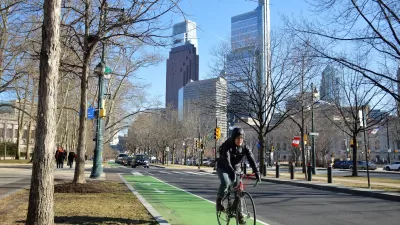The third edition of the nationally recognized road design guide includes detailed design advice for roads that prioritize safety and accessibility for all users.

A newly revised guide from the National Association of City Transportation Officials (NACTO) outlines best practices and recommendations for street design that prioritizes bikeways. “Endorsed by the U.S. Department of Transportation and recognized in federal law, the Urban Bikeway Design Guide is used by hundreds of municipalities, state DOTs, and regional agencies across the U.S. and Canada to design streets that are safe and accessible for people biking.”
The guide outlines how cities can easily and affordably implement safety and mobility improvements. “The new edition includes detailed policy, planning, and project development guidance to ensure connected bikeable streets become standard practice. It also shows how to center equity and access in every step of planning and implementing a bike network–addressing inequities caused by the transportation system and building collaborative partnerships with historically marginalized groups of residents.”
The newest edition acknowledges new types of mobility such as e-bikes and scooters and includes more detailed design practices that improve safety for all road users. The guide also offers advice in network planning, community engagement, and maintenance needs.
FULL STORY: NACTO Launches New Urban Bikeway Design Guide for the Next Generation of Innovative Cycling Infrastructure

Planetizen Federal Action Tracker
A weekly monitor of how Trump’s orders and actions are impacting planners and planning in America.

Congressman Proposes Bill to Rename DC Metro “Trump Train”
The Make Autorail Great Again Act would withhold federal funding to the system until the Washington Metropolitan Area Transit Authority (WMATA), rebrands as the Washington Metropolitan Authority for Greater Access (WMAGA).

The Simple Legislative Tool Transforming Vacant Downtowns
In California, Michigan and Georgia, an easy win is bringing dollars — and delight — back to city centers.

DC Backpedals on Bike Lane Protection, Swaps Barriers for Paint
Citing aesthetic concerns, the city is removing the concrete barriers and flexposts that once separated Arizona Avenue cyclists from motor vehicles.

In These Cities, Most New Housing is Under 441 Square Feet
With loosened restrictions on “micro-housing,” tiny units now make up as much as 66% of newly constructed housing.

Albuquerque’s Microtransit: A Planner’s Answer to Food Access Gaps
New microtransit vans in Albuquerque aim to close food access gaps by linking low-income areas to grocery stores, cutting travel times by 30 percent and offering planners a scalable model for equity-focused transit.
Urban Design for Planners 1: Software Tools
This six-course series explores essential urban design concepts using open source software and equips planners with the tools they need to participate fully in the urban design process.
Planning for Universal Design
Learn the tools for implementing Universal Design in planning regulations.
Smith Gee Studio
City of Charlotte
City of Camden Redevelopment Agency
City of Astoria
Transportation Research & Education Center (TREC) at Portland State University
US High Speed Rail Association
City of Camden Redevelopment Agency
Municipality of Princeton (NJ)





























